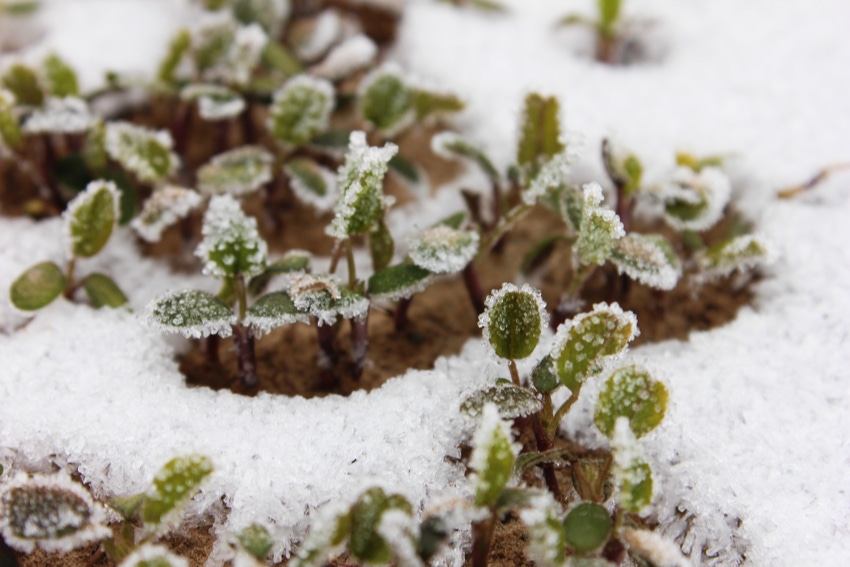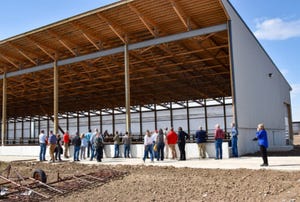Cold-tolerant berseem clover gives producers frost seeding option
Patented clover can survive temperatures as low as 5°F with zero snow cover.
January 17, 2018

Extended growing seasons, higher yields, increased establishment rates and convenience are just a few of the benefits farmers and ranchers can take advantage of when implementing frost seeding into their hay and pasture systems, according to Jerry Hall, director of research for Grassland Oregon.
“Frost seeding is the broadcasting of seed onto the frozen surface of the soil. Ideally, it is done at a time when there is either no snow or a minimal amount. The freezing and thawing cycle of the soil surface will allow for the seed to work into the top 0.25 in. of soil,” Hall explained. “Seeds will then germinate and begin growing as soon as weather conditions become favorable, allowing producers to gain a couple of weeks of growth versus waiting for the soil to firm up enough to drill the seed in.”
Recently, Grassland Oregon was awarded a patent for Frosty Berseem Clover — making it the first cold-tolerant berseem clover suitable for frost seeding in the U.S. and Canada — after showing that it survived in trials with temperatures as low as 5°F and zero snow cover.
Hay, pasture improvement
According to research in Saudi Arabia, the synergistic relationship between berseem clover and alfalfa significantly improves the quality and yield of forage when seeded at a mixture ratio of 80% alfalfa to 20% berseem clover, making it a desirable species for hay producers, the announcement said. However, prior to the availability of Frosty Berseem Clover, the most cold-tolerant berseem clover on the market could withstand temperatures only as low as 25°F, Grassland Oregon said.
The patented variety “is excellent for frost seeding into declining alfalfa fields as it is not affected by alfalfa’s allelopathy. It also blends nicely with alfalfa due to its similar quality and appearance,” Hall explained. “One thing to note is that when utilizing Frosty Berseem Clover, it is imperative that the cutting height be raised so that it is above the lowest leaf on the plant — typically 2-3 in. in height. While alfalfa stores its energy in the root, berseem clover stores its energy in the base of the plant. Cutting too low can impact the ability of berseem clover to recover and regrow.”
In hay production trials by Pennsylvania State University, the cold-tolerant clover, which can fix 150 lb. of nitrogen per acre, produced more than four tons of dry matter per acre in a two-cut system. In a separate trial by Mississippi State University, the cold-tolerant clover was found to have a crude protein content of 20.5% and was non-bloating for livestock.
“While Frosty Berseem Clover has proved to be a diverse variety for producers, frost seeding it can be very beneficial when it comes to improving a field or pasture with existing plants,” Hall said. “The new seed can start growing at the same time as the existing plants, putting the new seedling on a more even field when it comes to acquiring nutrients and water in the soil — making all the difference in the world in successful establishment.”
You May Also Like



